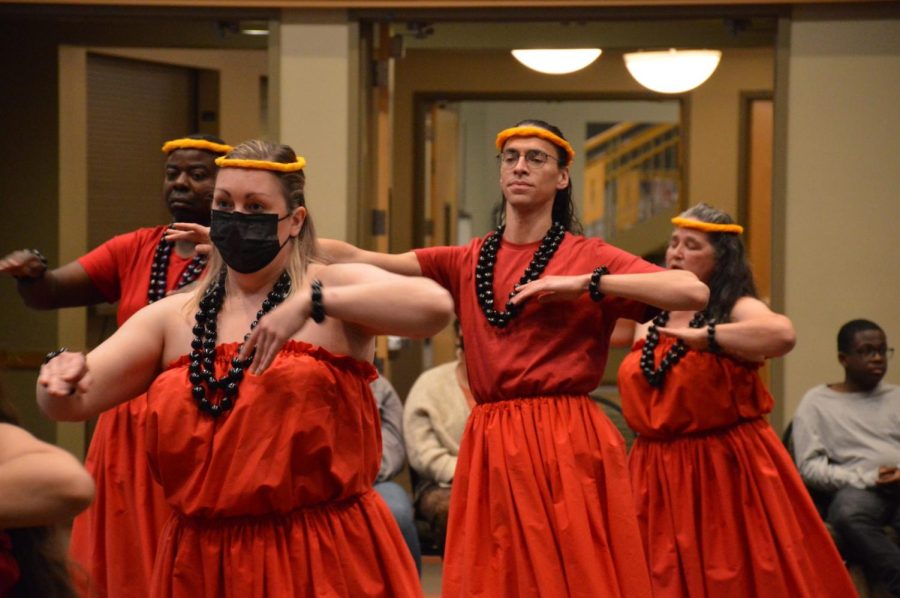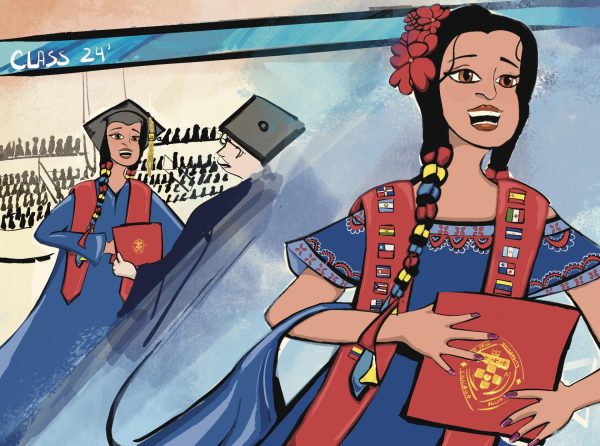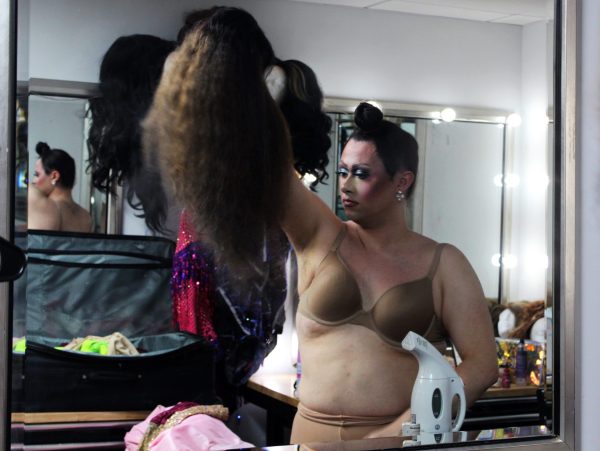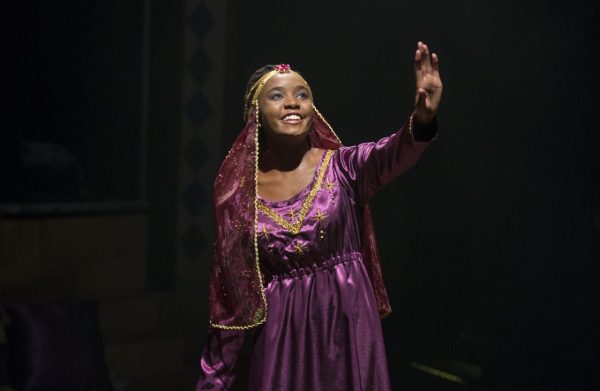“Our history lies within our dance:” DePaul commemorates second annual Indigenous People’s Day Celebration
The performances began with a ritual dance for the Volcano goddess, Pele.
Before skyscrapers could challenge the laws of gravity and gospel sung, marshy wetlands and tangled thickets defined America’s third-largest city. Occupied by the Ojibwe, Odawa and Potawatomi Nations, these Indigenous tribes maintained, cultivated, and exalted the land for over 20,000 years before colonization.
Presently, Chicago, a name derived from the Algonquian word “Checagou,” inhabits the ancestral land of more than 10 Indigenous tribes and maintains the third-largest native population in the United States, with 65,000 inhabitants from over 175 tribes.
Since 2021, Indigenous People’s Day has been a nationally recognized observation, acknowledging the resilience and oppression Native Americans have endured at the hands of colonization.
DePaul’s second annual celebration, hosted by the Office of Multicultural Student Success (OMSS) in the Student Center, highlighted three Indigenous performance groups: Halau i Ka Pono, Danza Azteca Xochitl-Quetzal and Ayodele Drum & Dance, each illustrating the preservation of culture through movement and rhythm.
Gustavo Licón, assistant director of OMSS, explained the importance of recognizing native individuals’ hardships and their lives and continuing cultural impact.
“A lot of people are not aware of Indigenous People’s Day because it has traditionally been Columbus Day and you know as people of marginalized identities, we decided throughout the world that its important to actually honor the people who went through the hardships of colonization and genocide and of cultural imperialism,” said Licón.
In recognition of DePaul’s occupation of stolen land Licón, unveiled the University’s land acknowledgement. The formal declaration identifies Indigenous peoples as the rightful stewards of the land and their relationship with their established territories.
“We share DePaul University’s land acknowledgement to remember and honor Indigenous communities whose sacred lands we are inhabiting now,” said Licón
It wasn’t until 2018 that The City of Chicago Council passed its own Land acknowledgement resolution. Since then, over 10 cities, such as Denver and Portland, have adopted land acknowledgements.
“At DePaul University, we acknowledge that we live and work on traditional native land that our today home to representatives of over 100 different tribal nations and we send our respect to all of them including the Potawatomi, Ojibwe and Odawa nations who signed the treaty of Chicago,” said José Perales, DePaul’s director of diversity operations as he read aloud the acknowledgement.
As the celebration commenced, Halau i Ka Pono took center stage, captivating the audience with fluid movements central to both traditional Hula, a ritual performed to honor the Volcanic Goddess Pele and her sister Hi’iaka, and modern forms of the dance.
The Chicago-based Hawaiian Hula school, led by June Yoshiko Kaililani Ryushin Tanoue, invited students to learn about the traditional art of Hula alongside the group’s efforts and honor to preserve its cultural practice.
“And for me, hula is very much about healing as well as the dance,” Tanoue said.
Growing up on Hamakua in Hawaii, dancing was always a part of Tanoue’s life, eventually inspiring her to study beneath a Master Kuma – an expert teacher – before moving to Chicago in order to work full time for Feeding America, a nationwide network of foodbanks.
One unique aspect to Tanoue’s teachings are the five values she wants her students to take away from the tradition and practice of hula.
“By spiritual, I mean, I have expectations for my students, that they practice listening, which Zen or meditation is very much about listening, it’s kind of like letting things go, that clutter the mind, and they keep coming back,” said Tanoue.
Beyond listening and sacrifice, Tanoue expects her students to respect the numerous traditions of hula, to be prepared and have patience, especially when dealing with strenuous situations.
“ These are all spiritual practice, you know, being patient with yourself, being patient with others, it’s a big practice,” said Tanoue. “And the best time to practice patience is when you’re up against difficult situations. Because without them, how would we practice patience?
DePaul Junior Frida Campos illustrated OMSS’s journey to organizing the event.
“Our coordinator [Mariela Aranda] they go through really hard work trying to find various performers and social activist groups. There are a lot of logistics involved, making sure all of the performers feel comfortable and bringing that social justice component, and what colonizers around the world did to Indigenous groups.” Campos said.
Danza Azteca Xochitl-Quetzal, led and founded by Henry Cervantes, sought to uphold the ancient Aztec culture through traditions passed down through the generations.
“Our history lies within our dance,” Cervantes said. “These dances are at least five centuries old so our practice is to pass on the dances as they were originally taught during pre-Columbian times.”
Since the group’s 2015 foundation in Chicago’s Little Village, over two dozen multi-generational dancers have joined, with some as young as eight years old.
However, Cervantes does not treat the group’s times onstage as an act but a learning experience.
“Something that I like to say is when we do cultural events like this, we are sharing our culture. So, it’s an educational opportunity compared to a performance. We’re kind of just presenting what’s been taught to us,” Cervantes said.
Yet, beyond the energetic and captivating presence of Xochitl-Quetzal’s members is the reason they dance.
“What Christopher Columbus and Hernán Cortés tried to do was erase us from the map. On their first day [in Mexico] here, slavery was on their minds…they thought we were an ignorant people,” Cervantes said. “For these ceremonies and songs to exist, I think it speaks to the persistence and perseverance of Indigenous people that we are still here.”
Concluding the celebration was Ayodele Drum and Dance, a diasporic showing of drum and dance from the feminine perspective.
As measured vibrations from hand drums and wooden sticks rang throughout the conference room, the women’s group encouraged spectators to get up and dance, furthering a sense of family and community.
While Indigenous People’s day has only recently been recognized in the eyes of the nation, individuals must remember to celebrate the lives and culture of the nation’s first people and acknowledge the continual effect of colonialism.
“If you take anything away from this event today, it’s that Indigenous people, their cultures, lives, dreams and struggles are still alive today,” said Licón.
Connect with Lilly Keller: @lillyraek | [email protected]
















